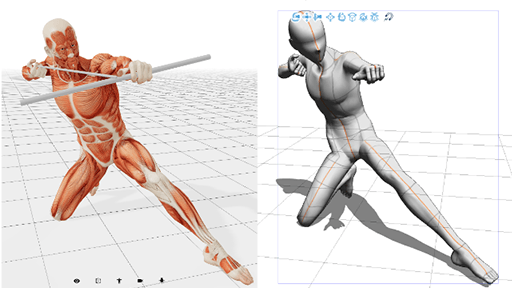Drawing Legs & Feet
Hello! Today I'm going to break down my drawing process to the best of my ability and show you all how I draw legs and feet. I've never made a tutorial before but it's never too late to start as it'll make for good practice in future endeavors! For this tutorial, I'll be using one of my OCs, Minette as the subject for this drawing.
Drawing legs and feet always came easy to me, legs more than feet. They help show a whole array of motion and balance in a character’s design. You can draw your characters walking, running, jumping and much more with the legs alone. They convey a great deal of what the character may be thinking and doing or going to do. In this tutorial, I’m going to demonstrate how I draw legs and feet in clip studio paint and some tips I learned.
The first thing you'll need to think about is proportions.
1. Proportions
Legs and feet take up half the general body of a character. Depending on the look you're going for, you want the legs to be proportional so as to not look unnatural, unless unnatural is what you’re going for. Looking at references can help give you an idea of proportions in various positions. Clip also has access to 3D models that can be used as excellent references as well if you’re trying to find that perfect pose. These models are poseable and have a moveable light box that can help speed up the shading process. I won’t be using these references or models in this tutorial, these are simply just to convey the idea and provide some inspiration.
Keeping proportions in mind, let's break down the legs and feet with simple shapes.
2. Basic shapes
The best way to break down the body, especially the legs, is through the use of simple shapes. Breaking things down into simple shapes can help keep the character proportional and in contributing to the overall shape of the character.
Since the focus will be on the legs of this character, I’ve already sketched out the rest of the body. For the legs and feet, I use ovals, circles and triangles. The legs and feet should be about the same length as the upper half of the body. If using a reference, it’s easy to draw these shapes over the image to get a sense of placement, so that these proportions are not skewed and make the character look strange. Breaking things down to basic shapes helps simplify the process.
With our shapes outlined, let's flesh out these legs with some added details.
3. Adding details
Using these shapes as guides, I use lines to bridge the gaps, connecting the shapes to give a general shape of the legs and feet of the character. Legs are not perfectly straight and have many subtle curves, more or less depending on the character’s weight, position, height and general build. For smaller builds you can get away with less detail in the legs while more muscular and athletic builds would need more details. You can add additional lines to provide definition and define features through line art or save this for the coloring and shading phase.
With our legs drawn, it's time to finish them off with some feet.
4. Feet
Feet are a different obstacle by themselves and have taken me many years of practice to over come. They have more details to them than legs, however they are also easily broken down into shapes to give a guide as to how everything should be positioned. Feet in some regard are just like hands, flexible and very poseable. It’s best to start with the main foot, sketching out the general shape of the foot before moving on to the position of the toes that are appropriate to the pose, in this case a basic stance. Like with the legs, I connect the shapes to give me a more detailed definition of the feet. Feet are not flat, so make sure to include the arch of the foot and a bend to the toes. You can added extra details to the feet through line art or do this in the coloring stage of your drawing.
With everything sketched out, it’s time to line our legs and feet then move onto the coloring process.
5. Coloring and Shading
I tend to keep my coloring process very simple, with flat color and soft shading. Legs and feet are fairly simple to shade, only being more complex with detailed muscles and other additional details. Shading adds depth and weight to the drawing and gives the legs more definition. In this stage you can add details like nails to the toes, scars, blemishes and more to add more details to the character. For this character, she has darker skin so I’ll add a lighter color to the soles of her feet. For shading I want to use a light cool and fairly neutral color and set it to darken or multiply to get the darker effect. I lower the opacity to my desired level and blur to the harsh edges to give my shading a softer, more blended in appearance. In another layer, I’ll add a little bit of highlight to the legs. Using the same color as the shading, I set this layer to add and adjust the opacity to my desired level and using the blur tool soften the edges. Looking good!
And there you have it! That’s it for my tutorial on legs and feet. It’s always a good idea to use references if you’re stuck on a pose and practice identifying the basic shapes in those references. I hope this tutorial helped and always remember to keep practicing!











コメント